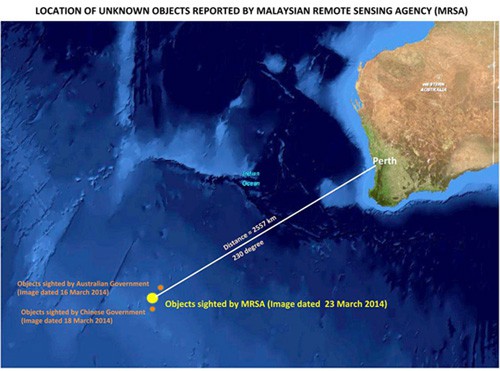|
Daunting task
Searching for the plane has remained the top priority and must carry on unremittingly, said the Chinese special envoy to Malaysia Zhang Yesui during meetings with Malaysian officials including the prime minister.
The search area has been reduced as a result of the new data to 1.6 million square km, but only 20 percent of that area has previously been searched, according to Malaysian Acting Transport Minister Hishammuddin Hussein.
Geoffrey Thomas, aviation safety consultant, believed the unstable weather, dangerous conditions, high waves and turbulent seas in the search area posed risks that could hamper the ongoing operation. "It's winter for eight months of the year, and during that period, it is the worst place in the world," quoted the online version of The Star newspaper.
As of March 27, five Chinese vessels -- icebreaker Xuelong, merchant ship Zhonghaishaohua, amphibious transport dock Kunlunshan, missile destroyer Haikou and supply ship Qiandaohu joined the search along with Australian vessel HMAS Success in the waters where Australia spotted floating objects that might be related to MH370. Four vessels were still searching the eastern part of the southern Indian Ocean. A further three vessels will head for the designated area in the coming days, according to Hong Lei, Chinese Foreign Ministry spokesman.
"We are not searching for a needle in a haystack. We are still trying to define where the haystack is," Australia's deputy defense chief, Air Marshal Mark Binskin, told reporters at a military base in Perth, Australia.
Binskin's view was echoed by Hu Zhen, deputy chief designer of China's manned deep-sea research submersible Jiaolong, which set a record 7,062-m trial dive in 2012. "The most difficult part for conducting deep-sea search is we don't know the exact location of the missing plane," he said.
In the ocean, the unmanned submersible has the ability to mark a general location, while the manned submersible is capable of marking the location more precisely.. "Jiaolong could have taken the lead on the scene if the debris field were located precisely and the water were no deeper than 7,000 meters," Hu explained.
The U.S. Navy's black box locator, the Towed Pinger Locator 25, arrived in Perth on March 26 and is expected to reach the designated area on April 5.
Everyone working together is in a race against time to calculate a precise search area where the vessel-towed locator should be deployed as the battery in the black box from MH370 is likely to die in early April.
"The searchers would not lose spirit although they were not getting any closer to finding the aircraft," Hishammuddin Hussein said. "We will carry on until MH370 is found."
 |
|
(MALAYSIAN REMOTE SENSING AGENCY) | | 